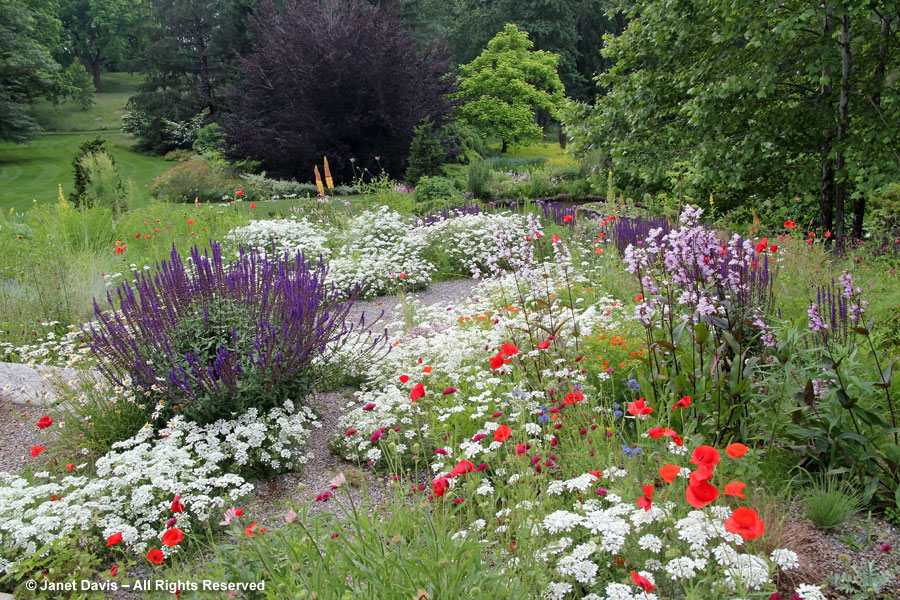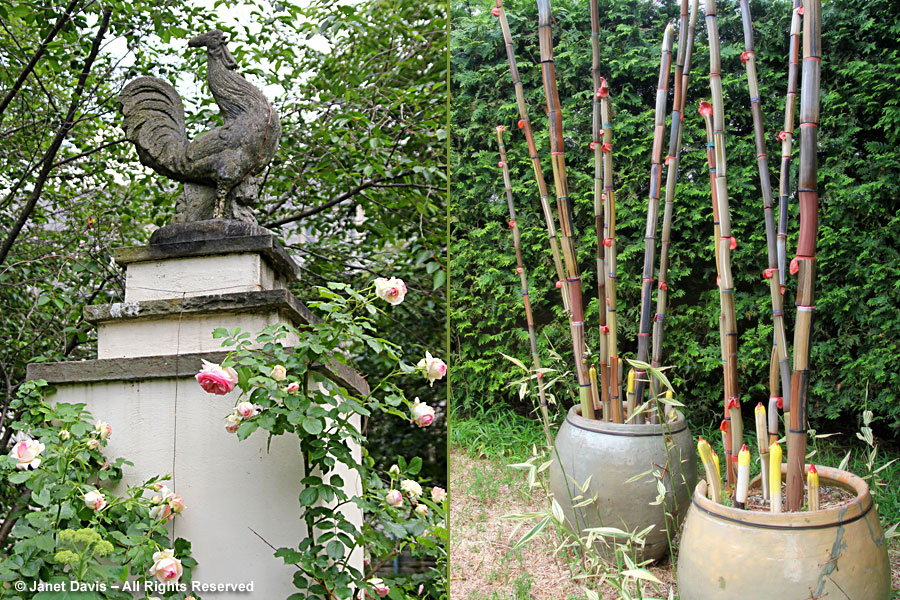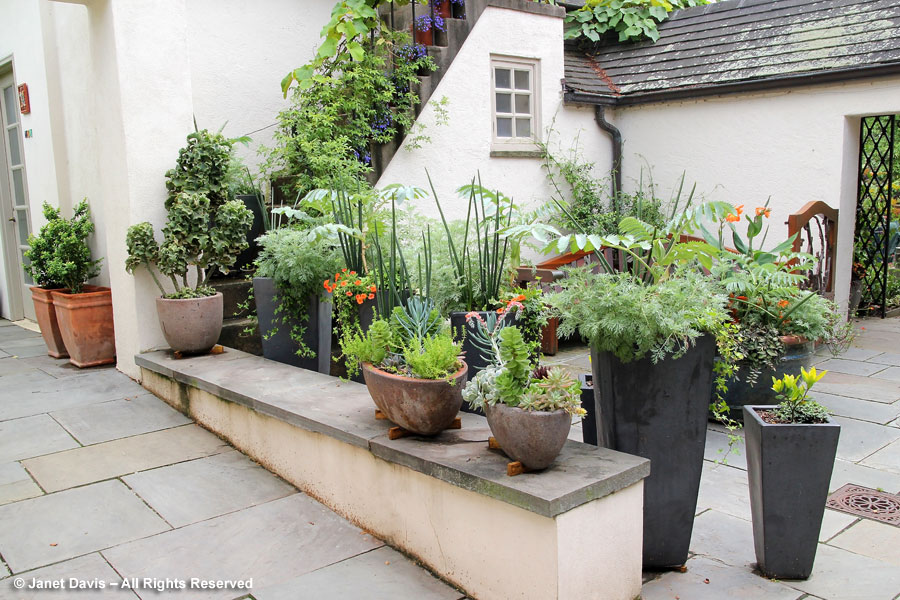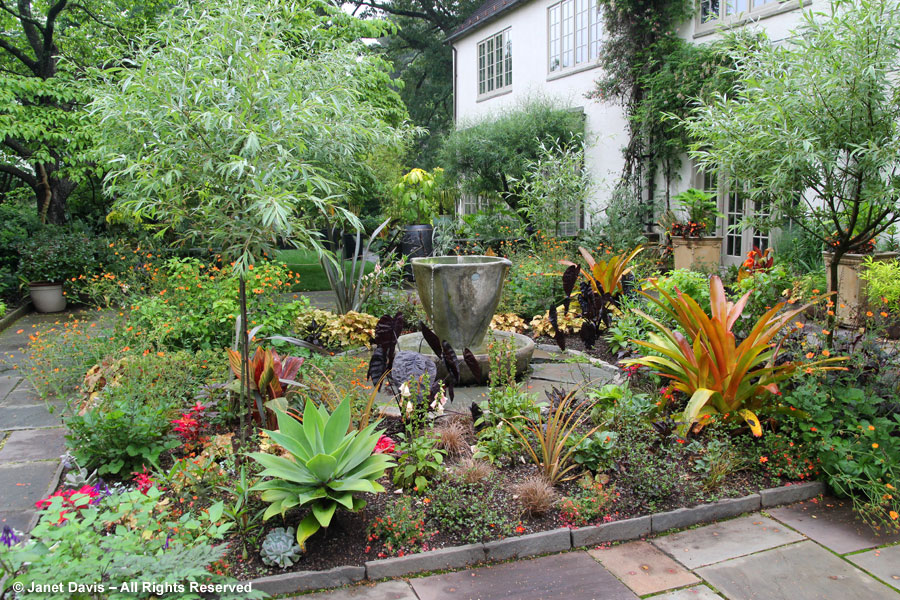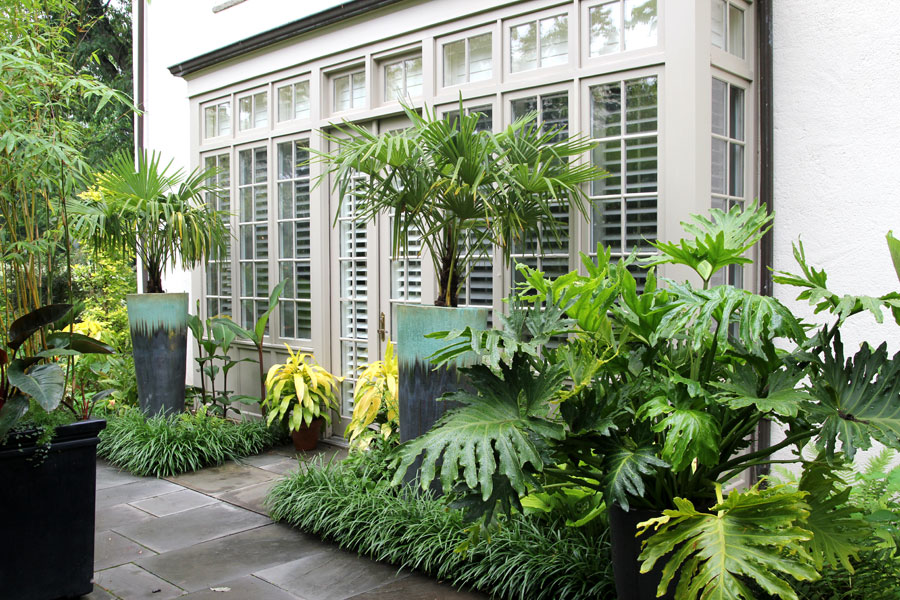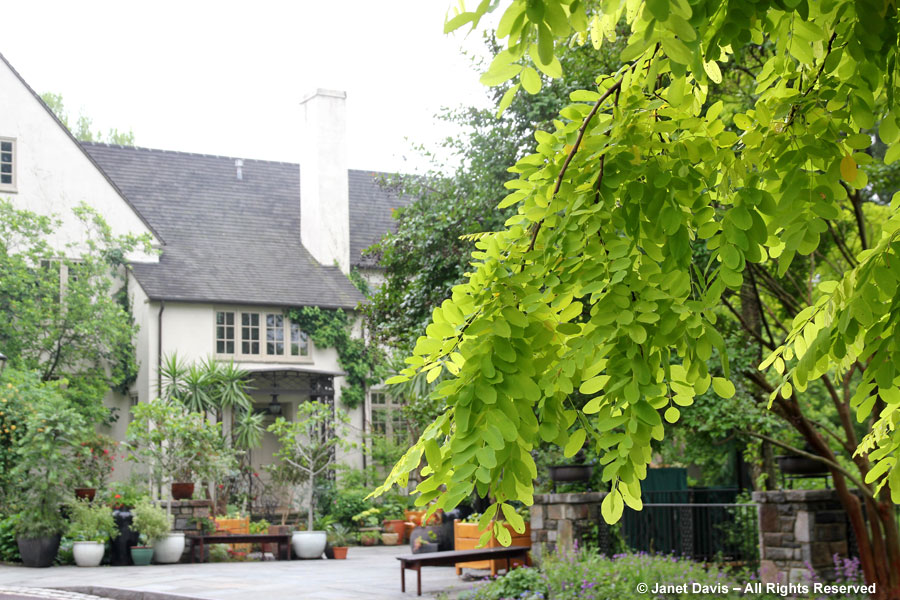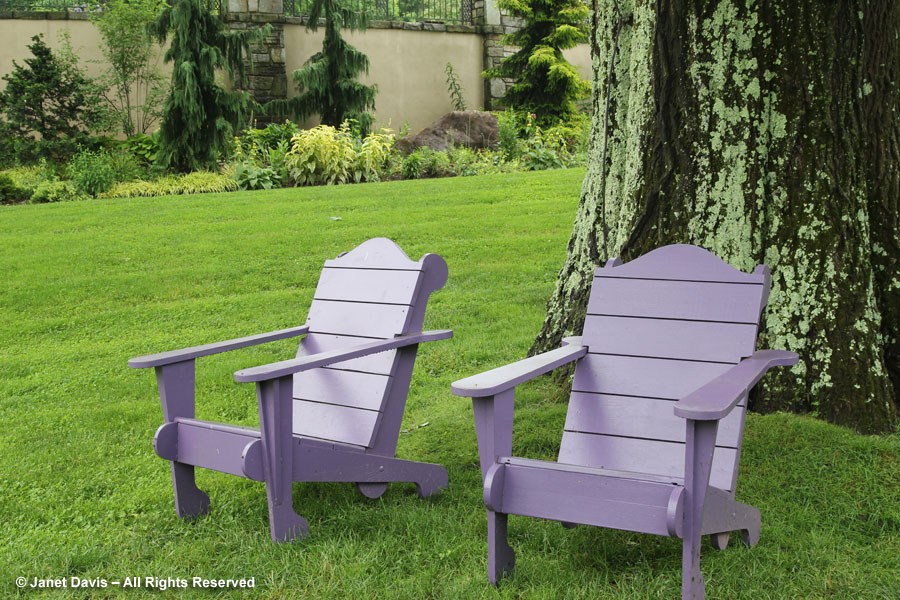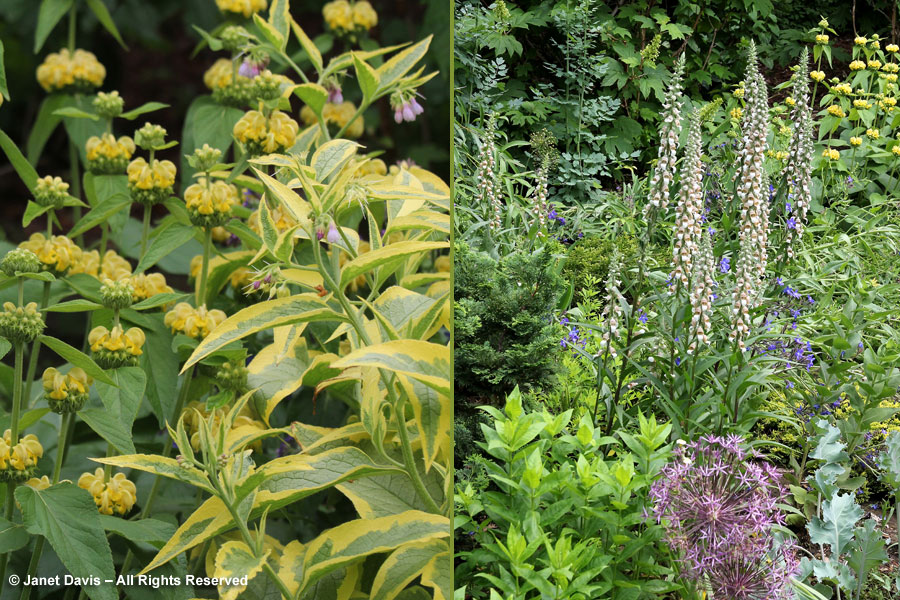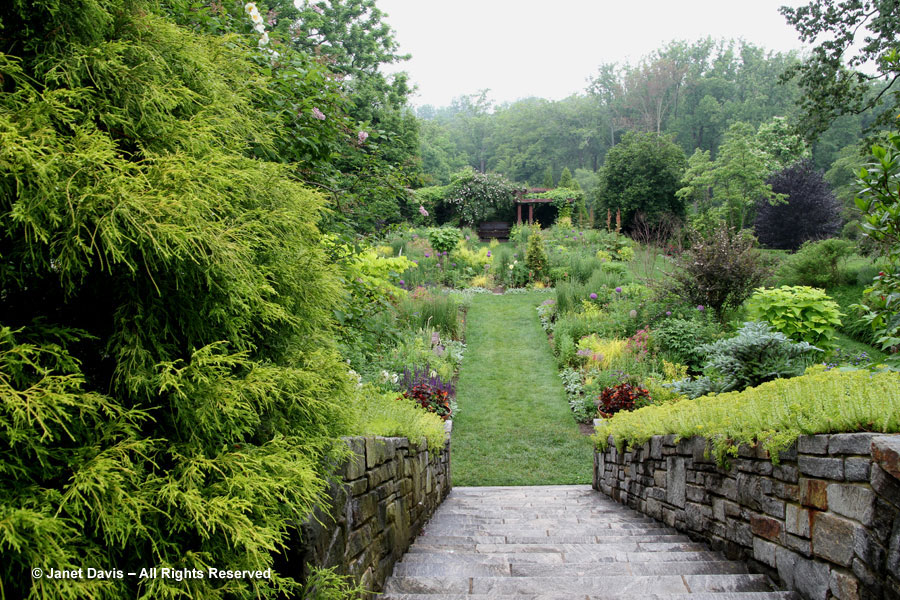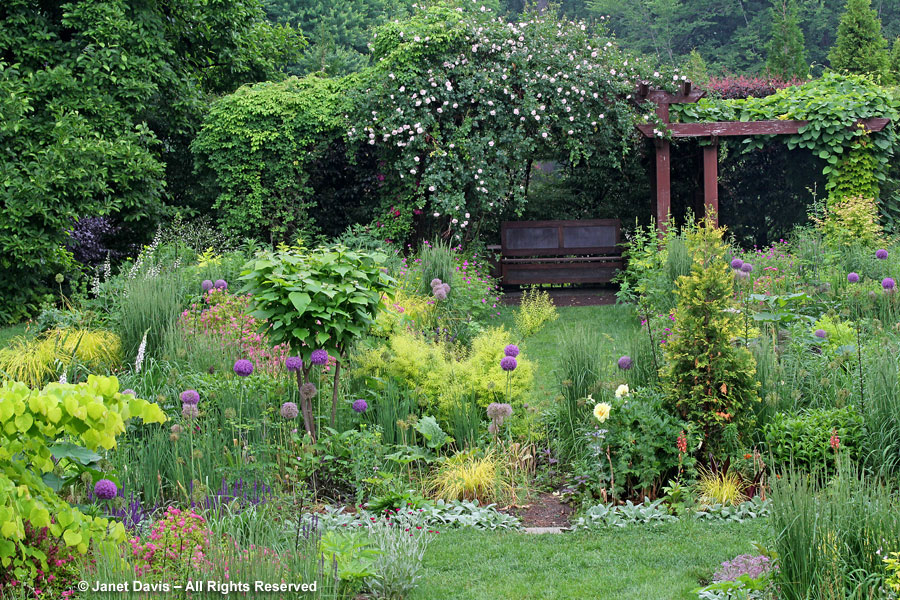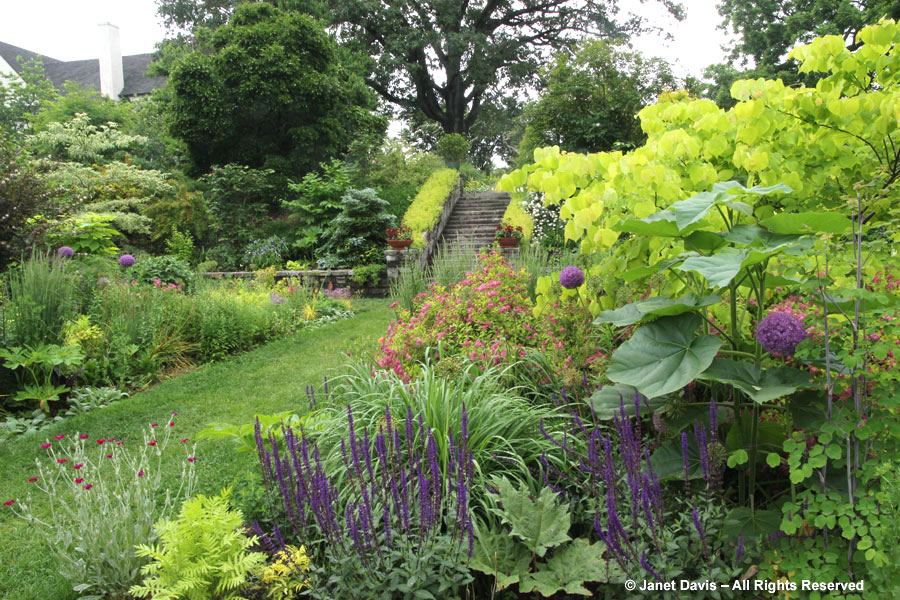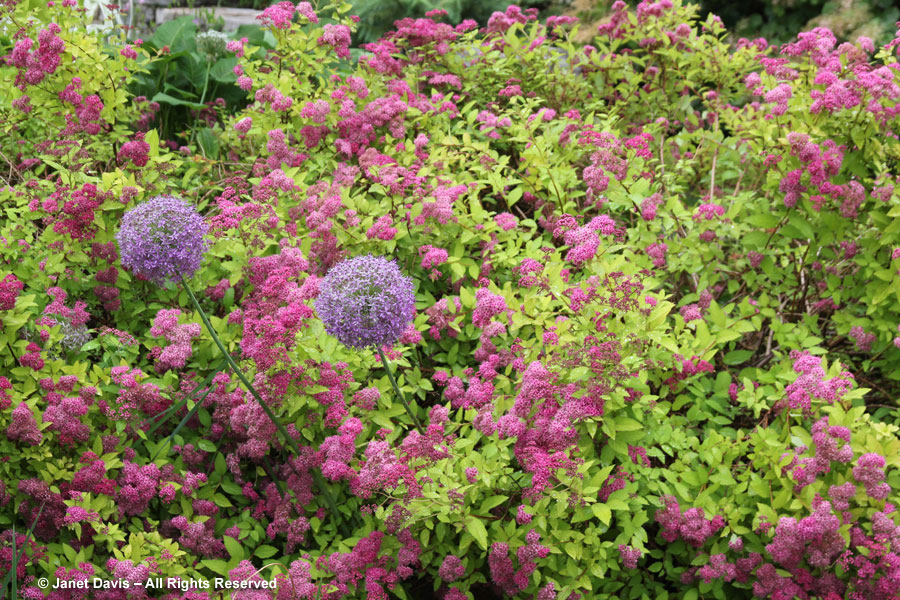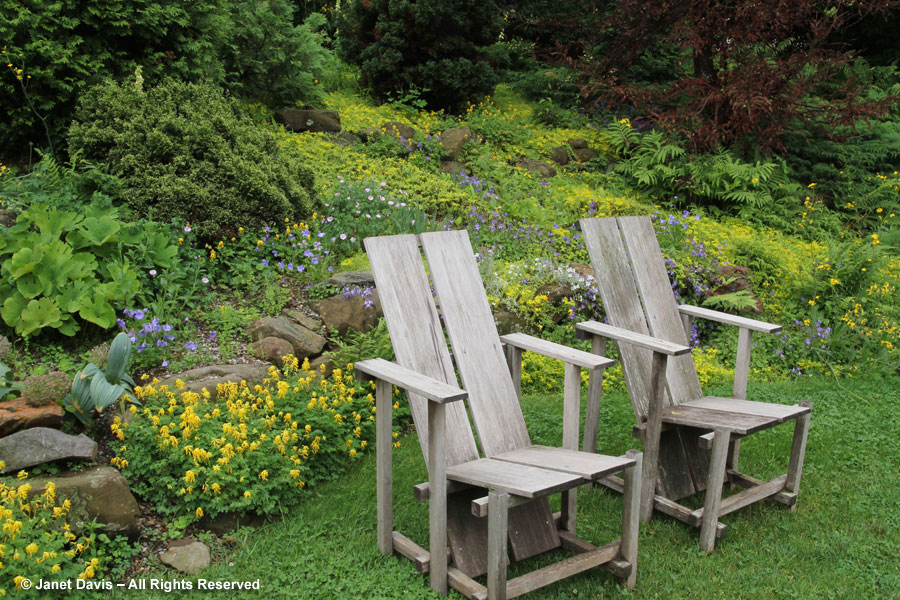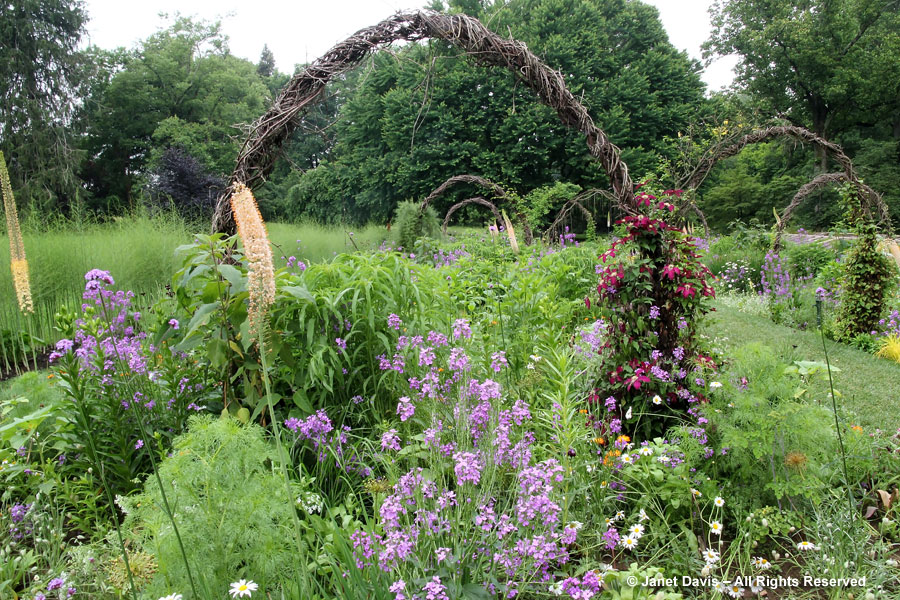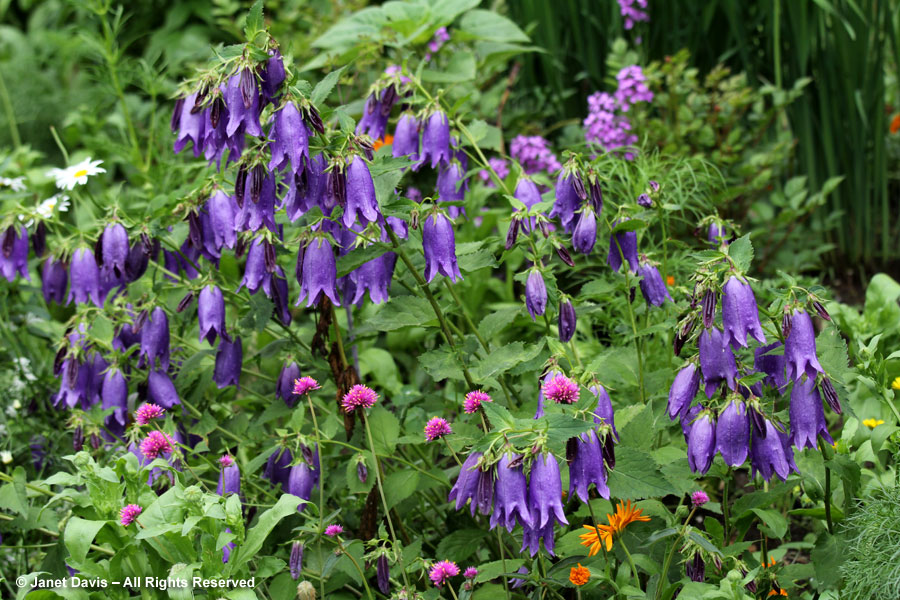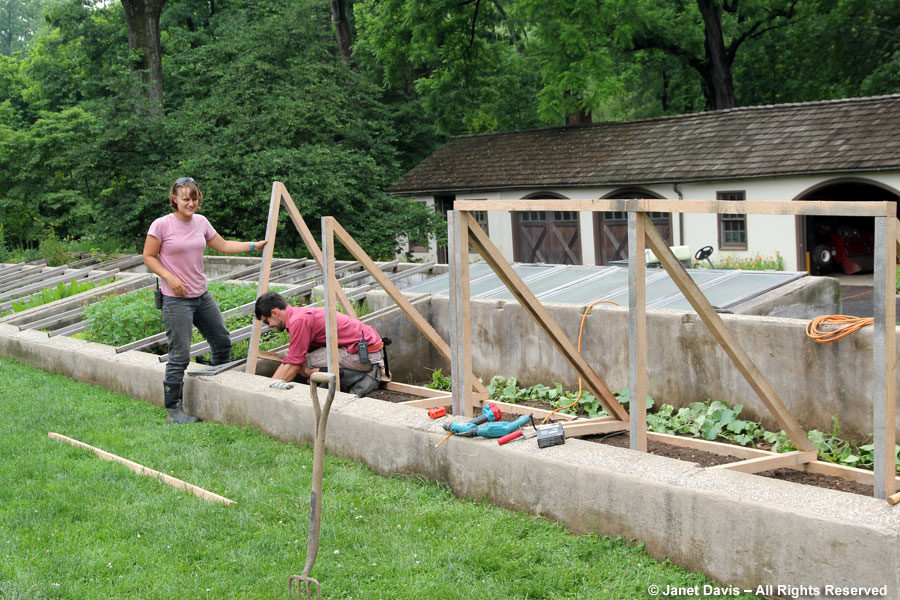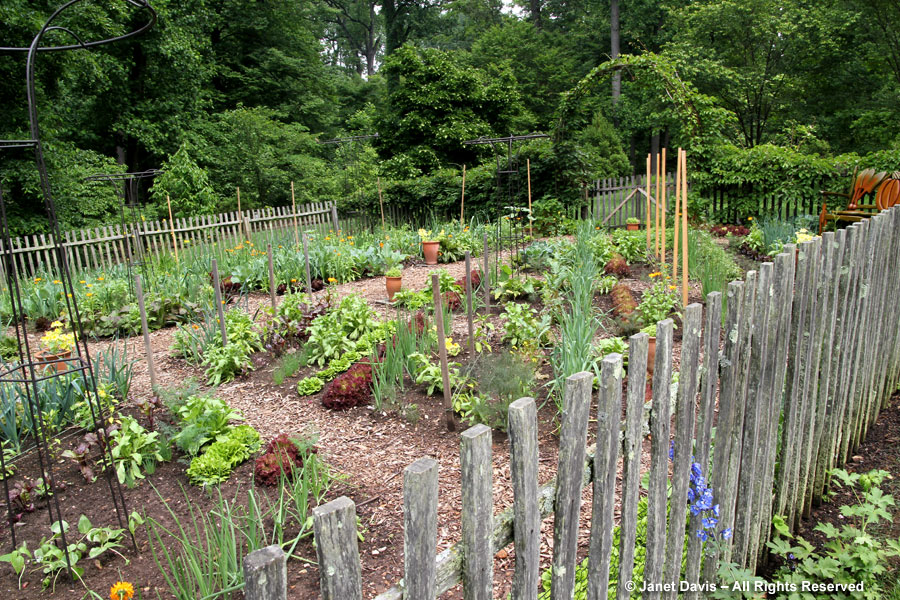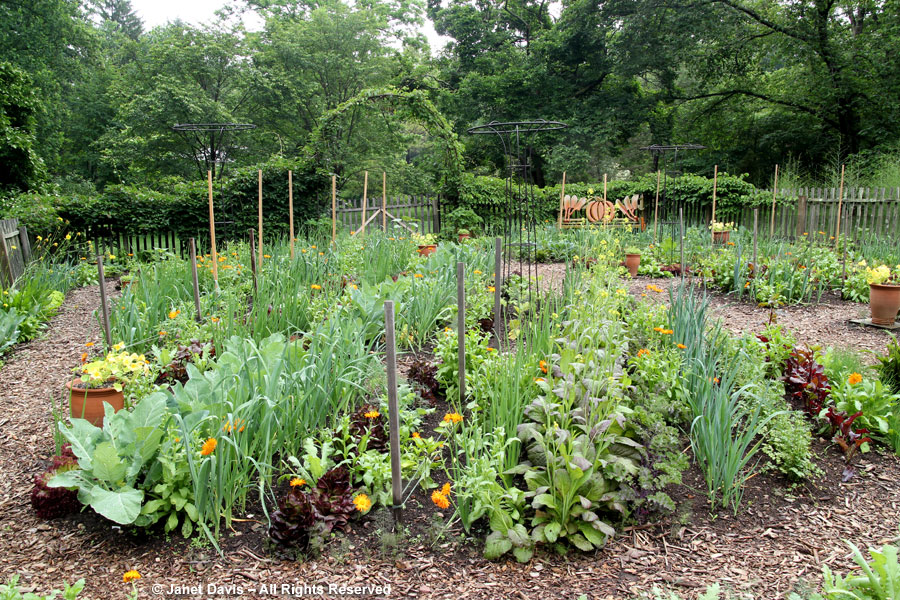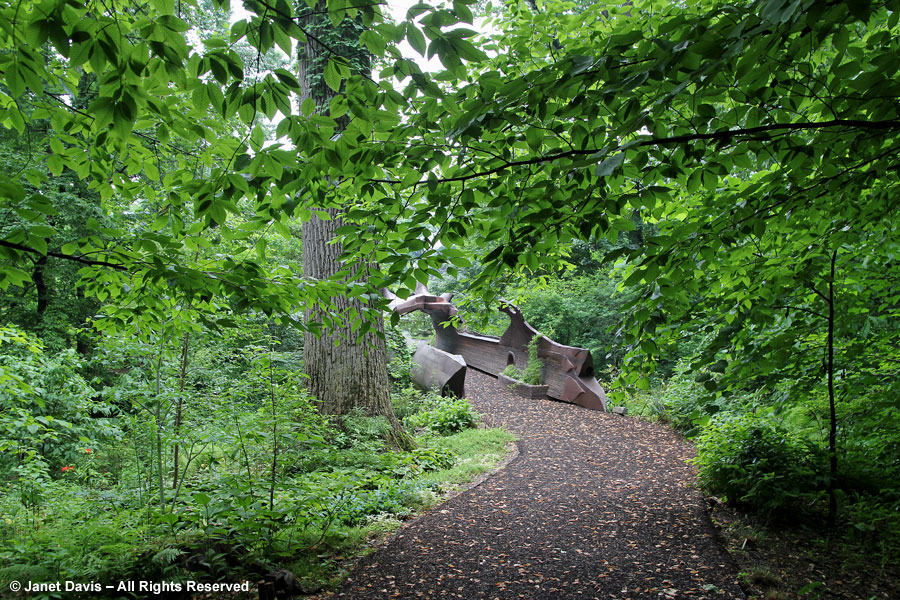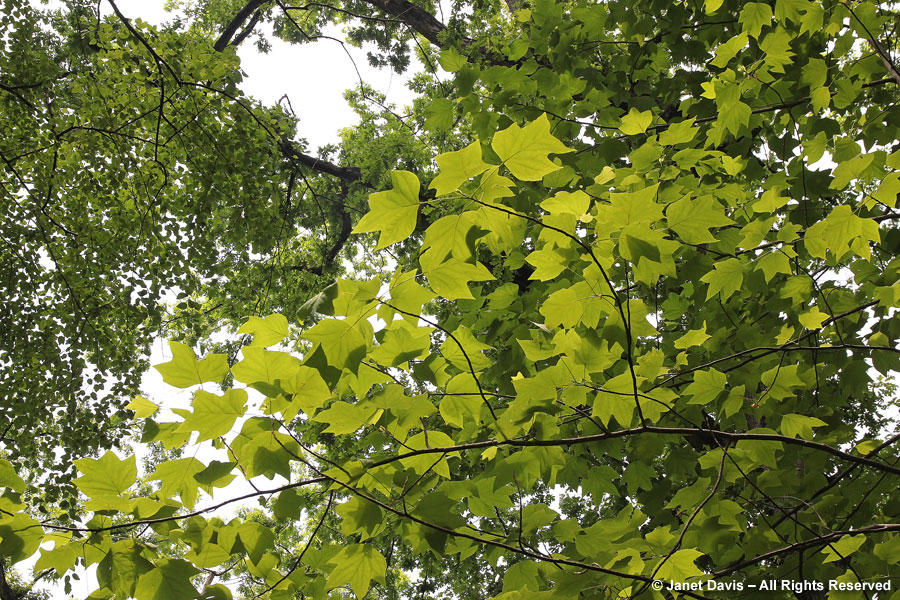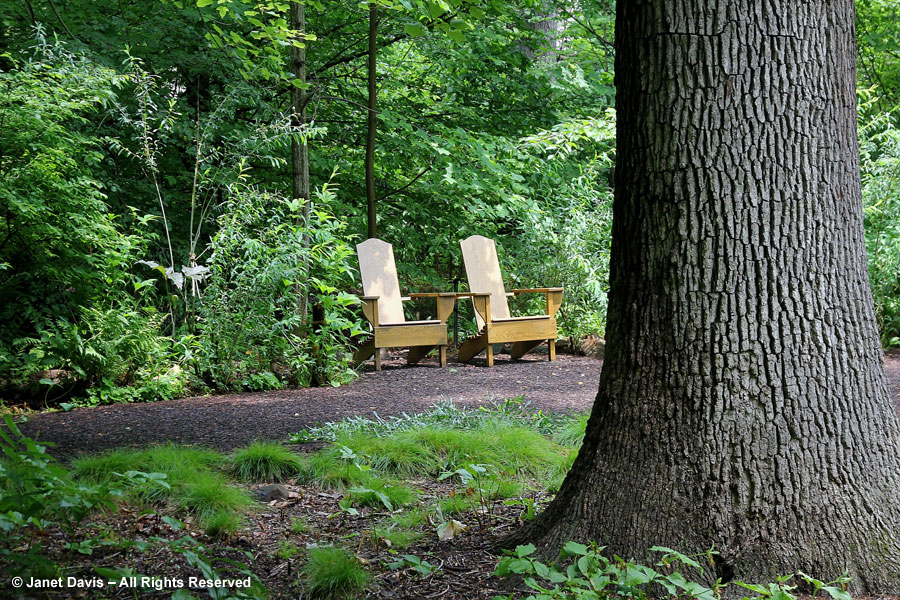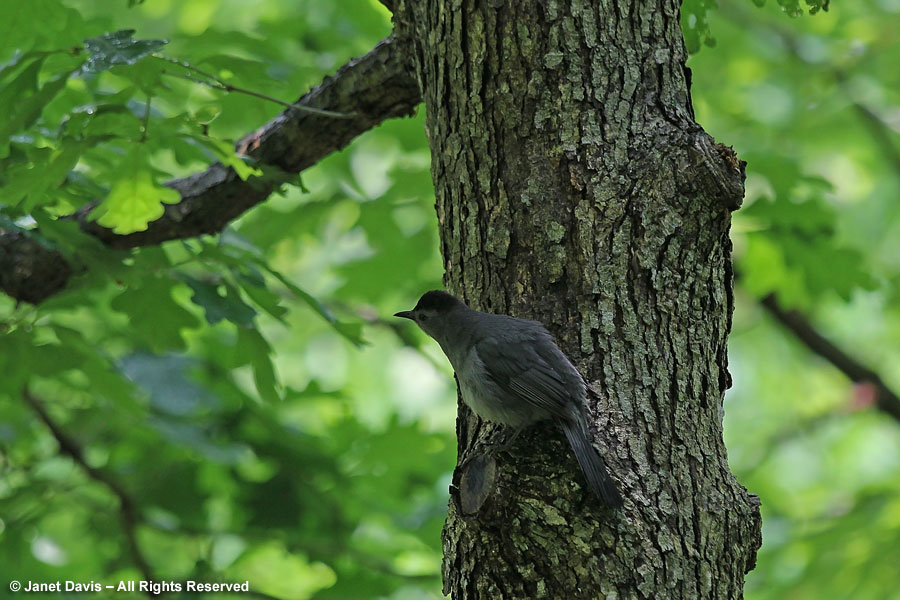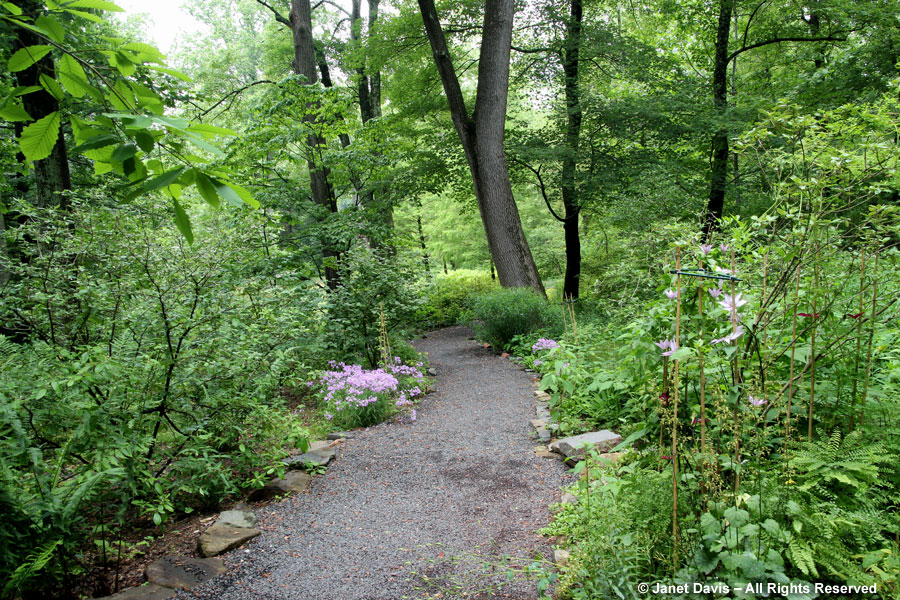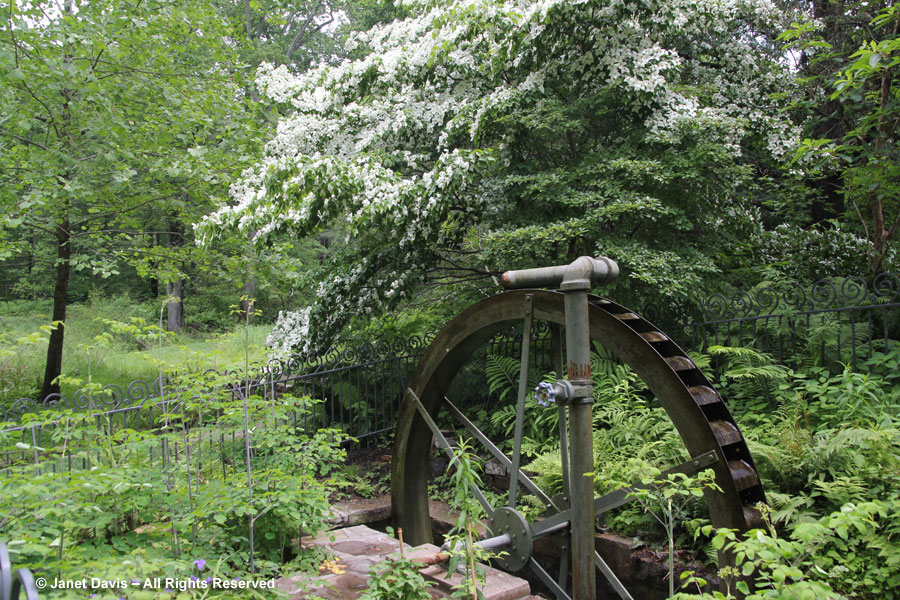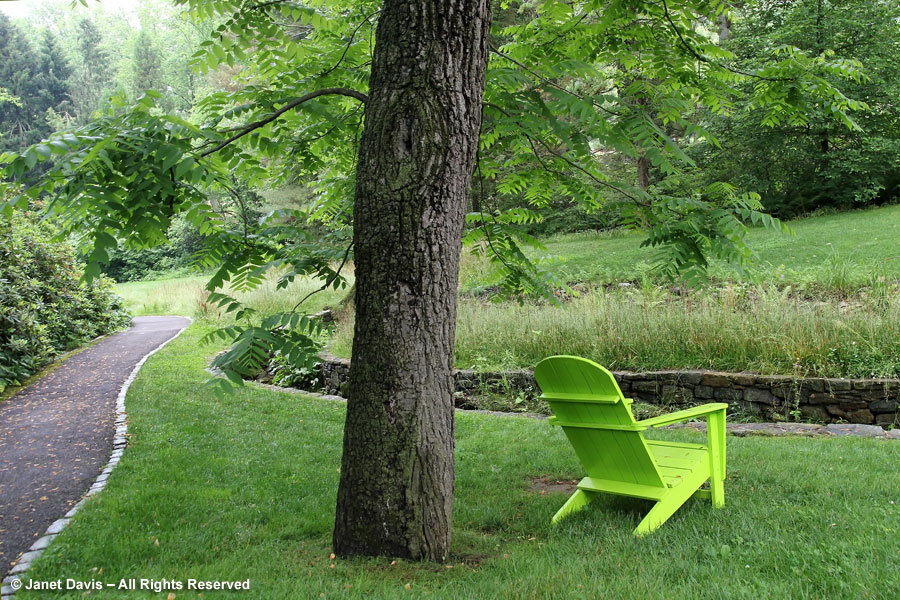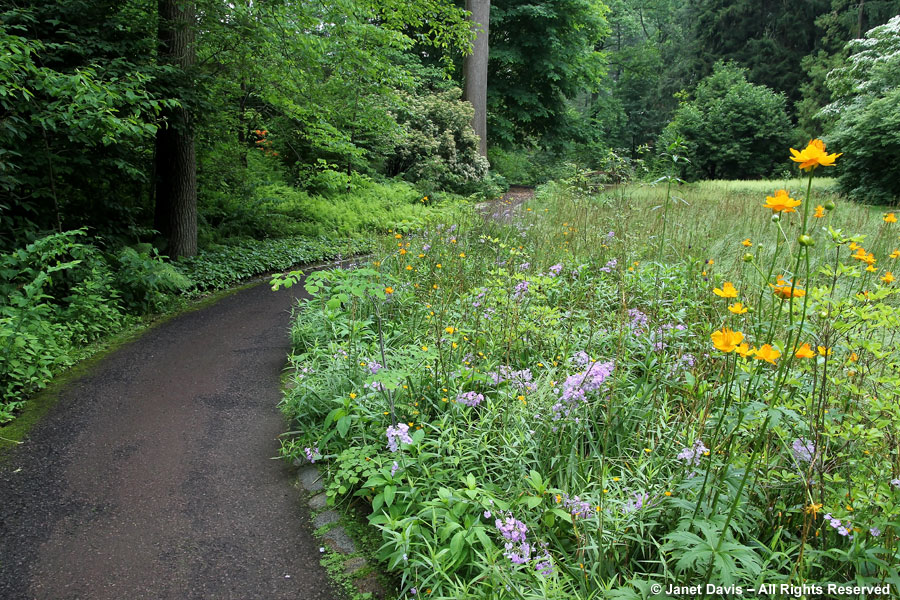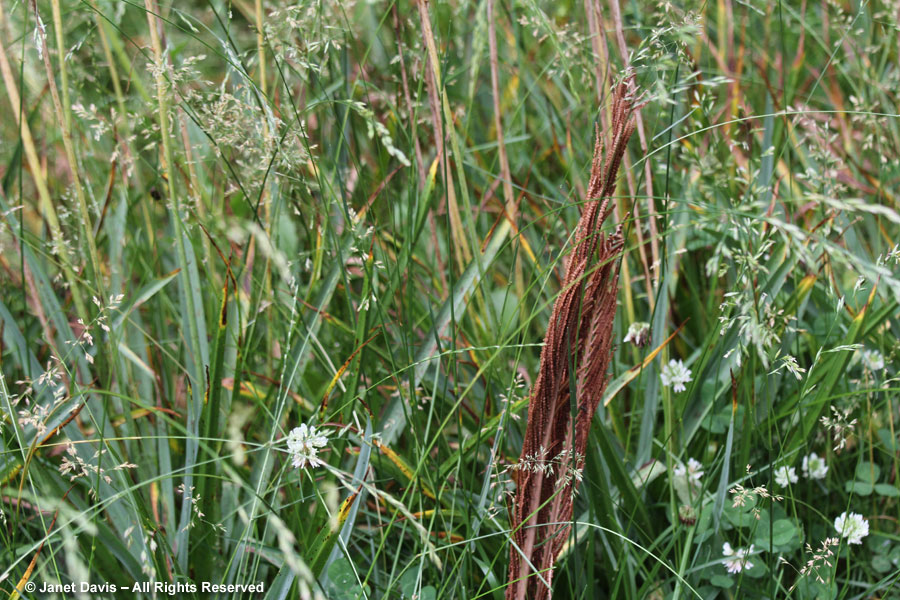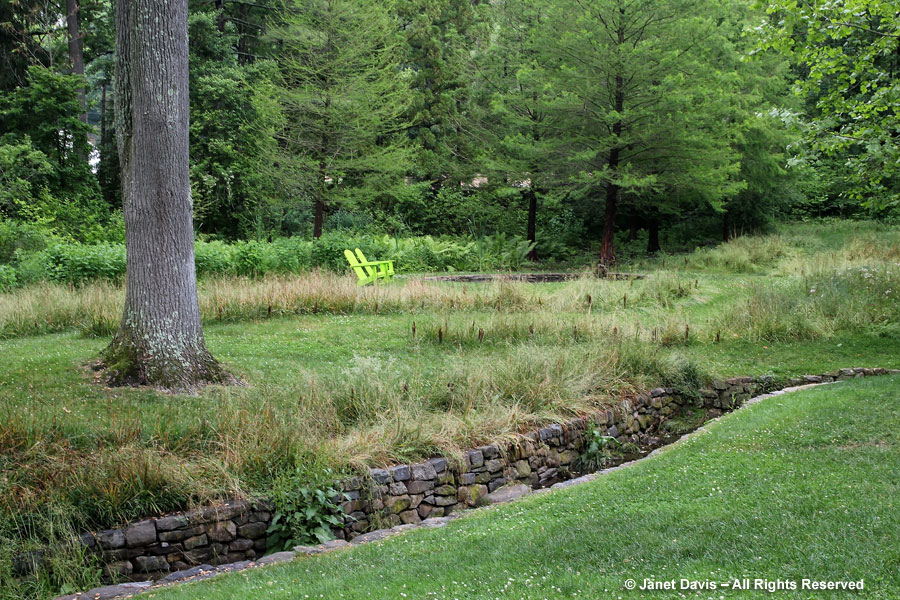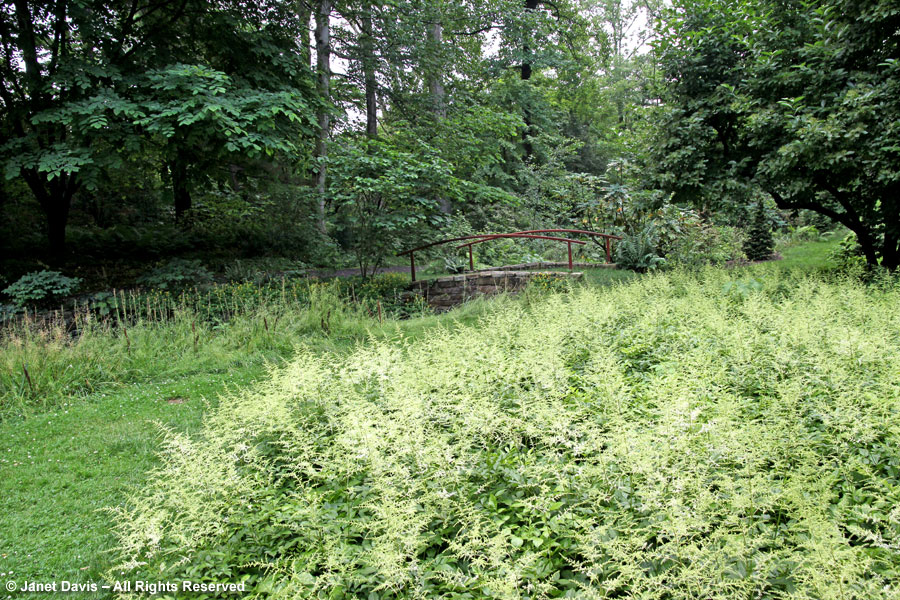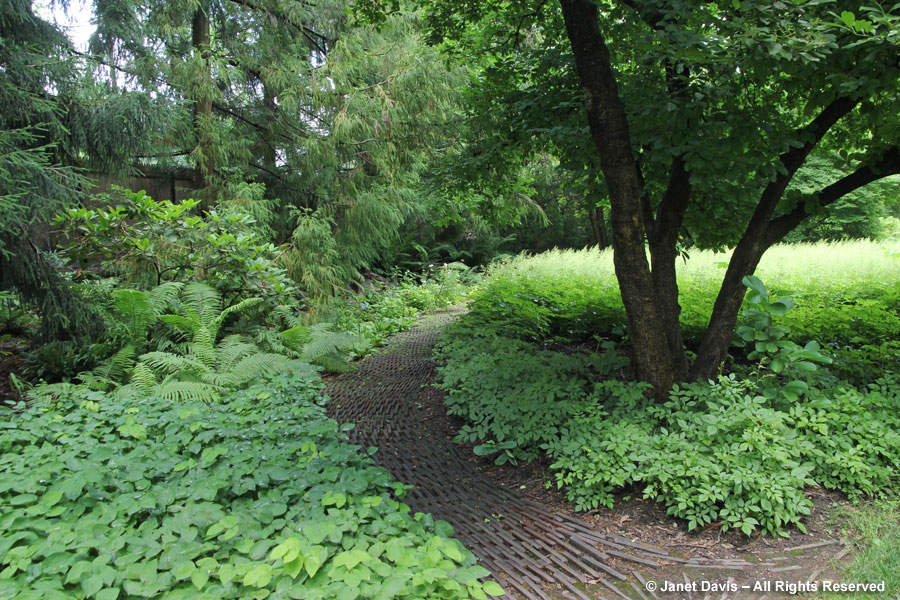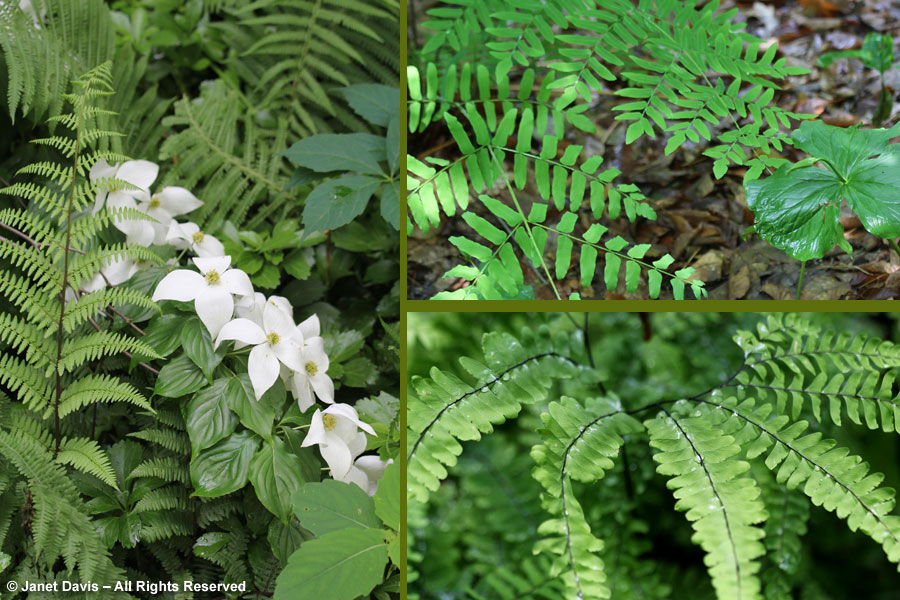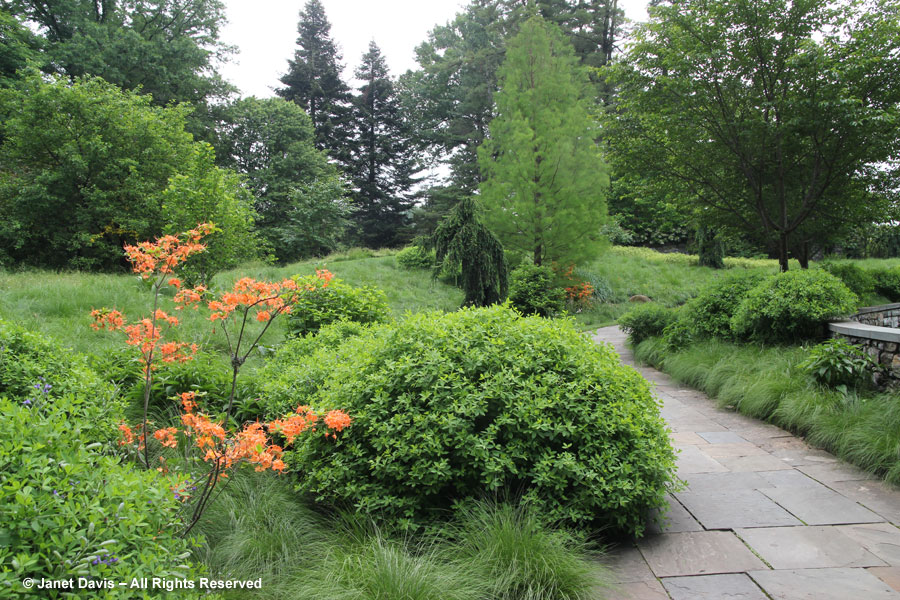Of all the public gardens I’ve visited around the world (and that list is very long), there is one that rises gracefully above all the rest. Not for the property, though this Pennsylvania estate is second to none. Not for the labels and signage, because there aren’t any (more on that later). And not for the gift shop, because this garden doesn’t need one; it is a gift in itself. There is no Victorian carpet bedding, no rows of annuals being trialled, no visitor’s tram, no snack bar. There are simply extraordinarily creative plantings, superbly rendered designs, intellectual interpretations of the landscape’s unique sense of place, and excellence all round. This is Chanticleer Garden, located in the hamlet of Wayne in Radnor Township, a half-hour drive from Philadelphia.
Earlier this June, I spent a charmed day wandering the hills and rills and valleys of Chanticleer. I brought a lunch from my hotel, but hours later had to remind myself to sit down in one of the many colourful chairs to eat it, so worried was I that I might miss a garden or two before I had to leave.
Chanticleer was originally the 1913 country home of Adolph G. Rosengarten Sr. (b.1870), whose grandfather George, the 21-year old scion of a German banking family, had founded a successful chemical business in Philadelphia in 1823 that produced, among other products, the anti-malarial drug quinine. Though not on the vast scale of Longwood, the home and garden another wealthy chemical magnate, Pierre Du Pont, had built 6 years earlier in nearby Wilmington, Delaware, Chanticleer took its place as one of the fabled mansions along the Main Line rail route, where Philadelphia society went to escape the summer heat. Perhaps reflecting his sizable investment, Adolph Sr. named his new home after the fictional Chanteclere from the William Makepeace Thackeray novel The Newcomes, a grand house that was “mortgaged up to the very castle windows”. In French, Chanticleer means rooster, and that literary allusion is seen in the many original rooster statues and motifs around the estate, left, and also in the rooster combs in California sculptor Marcia Donahue’s playfully suggestive ceramic bamboo culms.
In 1927, the year that the Rosengartens merged their company with Merck & Co., Adolph Sr., with his wife Christine, son Adolph Jr. (b.1906) and daughter Emily (b.1910), made Chanticleer their full-time residence. In time he built houses for both children as wedding gifts and it is at Emily’s house near the gate (now the garden’s administrative building) where my tour begins.
In the kitchen courtyard that acts as an entrance to the garden is a collection of beautifully planted containers
Pass through the gate from the kitchen courtyard and you reach the charming Teacup Garden, a courtyard centred by a formal parterre set around the cup-shaped, Italianate fountain that gives the space its name. Gardener Dan Benarcik, who oversees the Teacup and the Tennis Garden below the house, has described the feeling he wants to convey here as “lush formal”, maintaining the geometry of formal design but using lush tropical plants in the beds and containers. Though it’s early in the season for these summer heat-lovers, you can appreciate the brilliant foliage choices, including the gold-toned bromeliad Aechmea blanchetiana and the ‘Black Coral’ taros (Alocasia). Formality is emphasized with the four standard silver willows (Salix alba ‘Sericea’) in the corners.
At the other end of the house, windmill palms (Trachycarpus fortunei) in gorgeous glazed pots stand sentinel in front of French doors. The smaller pots contain golden scheffleras (S. actinophylla ‘Amate Soleil’). At right is a split-leaf philodendron (P. selloum ‘Hope’).
Now let’s head around Emily’s house to the front so we can make our way down to the gardens below. Gaze up as you head for the stairs: those brilliant chartreuse boughs of the ‘Frisia’ black locust (Robinia pseudoacacia) will give you a little clue as to the delicious colour sensibilities ahead.
On the sweep of lawn flanking the long borders sit a pair of purple chairs under a huge jack oak tree (Quercus alba x Q. montana). Colourful chairs are a staple at Chanticleer; set in the most picturesque places, they provide a little rest while offering a good photo opportunity.
The long borders feature a purple-blue-yellow-gold colour theme, seen below in combinations using variegated ‘Axminster Gold’ comfrey (Symphytum x uplandicum) with yellow phlomis (P. russeliana) on the left; at right is Allium cristophii with ‘Gigantea’ rusty foxglove (Digitalis ferruginea), blue Italian alkanet (Anchusa azurea) and phlomis in the background. The long borders and parking lot gardens are overseen by gardener Doug Croft, who greets me later and helps with a few plant id’s.
What was once the staircase leading to the tennis court in the Rosengartens’ time is now a dramatic, sedum-topped entrance to the Tennis Court Garden. Perhaps the best description of what lies ahead is “formal but informal”, with five flower beds planted in a profuse mix of perennials, bulbs and shrubs.
The colours in the Tennis Court Garden in June are predominantly pink, purple, yellow and chartreuse, the latter seen in the ‘Ogon’ spirea (Spiraea thunbergii) in the middle and the ‘Hearts of Gold‘ redbud (Cercis canadensis) at left. You also see the luscious Itoh hybrid peony ‘Bartzella’ and a few spikes of the popular salmon-orange ‘Illumination Flame’ foxglove (Digiplexis). In the background, ‘New Dawn’ and ‘Dr. Van Fleet’ climbing roses wreath the attractive pergola.
Coppicing (cutting back each spring) is used at Chanticleer in order to harness certain trees for their attractive foliage while maintaining them at a shrubby border size, such as the large-leafed princess tree (Paulonia tomentosa) seen here. Beyond is the brilliant foliage of Cercis canadensis ‘Hearts of Gold’. Also shown are ‘Caradonna’ meadow sage (Salvia nemorosa) and an allium (likely ‘Ambassador’).
Simple combinations can be very striking, especially using bulbs like the summer alliums, which offer a big hit of spherical purple, against a shrub like the Magic Carpet spirea (Spiraea x bumbalda ‘Walbuma’).
Comfy, foldable chairs sit in front of the rock wall behind the Tennis Court Garden. Here, the yellow-blue scheme continues the colour theme of the long borders nearby. Yellow fumitory (Corydalis lutea) and goldenmoss stonecrop (Sedum acre) predominate here, along with various blue or purple campanulas, centaureas and perennial geraniums.
At the bottom of the hill just before the woods is the enchanting Cut Flower Garden with its rebar-grapevine arches festooned with clematis (red ‘Niobe’ is shown). The arches provide structure throughout the year and draw the eye through the four quadrants overflowing with a riotous mix of annuals, bulbs and perennials meant to evoke an old-fashioned cottage garden. Though the annuals will hit their stride with summer’s heat, here we see some of the June cast of characters: biennial purple sweet rocket (Hesperis matronalis), ‘Filigran’ oxeye daisy (Leucanthemum vulgare) and peach ‘Spring Valley Hybrids’ foxtail lilies (Eremurus).
Rich-purple ‘Sarastro’ bellflower (Campanula) is joined by the zingy pink orbs of ‘Fireworks’ gomphrena and orange calendula.
Below, Emma Seniuk, the gardener for the cut flower and vegetable gardens, works with David Mattern to build a sturdy structure she calls the “cantaloupe tree”. All the gardeners at Chanticleer are encouraged to create the furnishings, accessories and even bridges for the gardens in their charge. Emma also spent 18 months in a student placement at England’s Great Dixter Garden, benefiting from a special scholarship in the name of Great Dixter’s renowned founder (and superlative flower gardener), the late Christopher Lloyd.
Here is the charming vegetable garden, surrounded by its rustic paling fence.
With its quadrants separated by paths, the garden suggests a French potager but the vegetables are planted within them in very American-style rows. Some of the harvest is used by the garden, but much is donated to those in need.
Now we are heading into Chanticleer’s newest “garden”, Bell’s Woodland. Opened in spring 2012 and planted with wildflowers, rhododendrons, redbuds and other shade-lovers under the mature native forest canopy, it is still being developed but offers a shady, naturalistic contrast to many of the Chanticleer’s other gardens. Don’t you love this fabulous “fallen tree” entrance fabricated by the Bell’s Woodland gardener Przemyslaw Walczak! 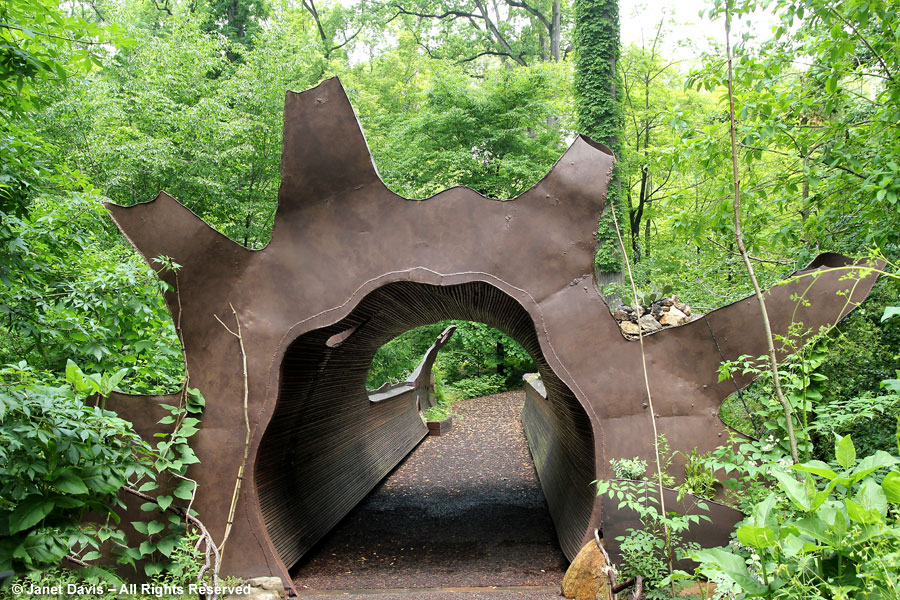
Bell’s Woodland celebrates plants of the Eastern North American forest and features mature natives like this American beech (Fagus grandifolia) with its boughs overhanging the path. The path, incidentally, is comprised partly of recycled shredded tires.
Towering tulip poplars (Liriodendron tulipifera) are a feature of the woods.
And, of course, chairs are set around so visitors can enjoy the peaceful surroundings….
….interrupted only by the song of birds.
Though the vast majority of plants here are native, a lovely collection of clematis has been established to add a little color to the pathways. The pink-flowered plants adjacent to the path are Phlox ovata.
The woods are cut through by a creek called Bell’s Run. At one time, this old water wheel pumped water from the creek to the Rosengartens’ swimming pool up the hill. The white-flowered tree is Chinese dogwood (Cornus kousa).
A chair under a black walnut tree (Juglans nigra) overlooks Bell’s Run creek.
Orange globe flower (Trollius spp.) pairs with a pink meadow phlox along the path.
Do you know what this is in the clovers and grasses? I was puzzled by a fern that didn’t seem to be growing yet. That’s because it wasn’t growing. Instead……
….it was an ingenious (and very naturalistic) way to mark the edges of the camassia meadows using the old fertile fronds of ostrich ferns (Matteucia struthiopteris), so the gardeners would know where to mow without cutting down the ripening leaves of the camassia that were in bloom a few weeks earlier.
This massed planting of white astilbe does something quite wonderful when viewed from the other side.
It forms a fluffy white horizontal to catch the eye and backlight the silhouette of the tree.
Here is a small array of ferns from Bell’s Woodland: lady fern (Athyrium filix-femina) with kousa dogwood, left; royal fern (Osmunda regalis) with a trillium leaf, top right; and a rain-splashed maidenhair fern (Adiantum pedatum) at lower right.
We come out of the woods near the old orchard where the daffodil leaves are ripening in the long grasses, and we’ve finished the first half of our tour. If your legs are still working, why not join me for the second half?

